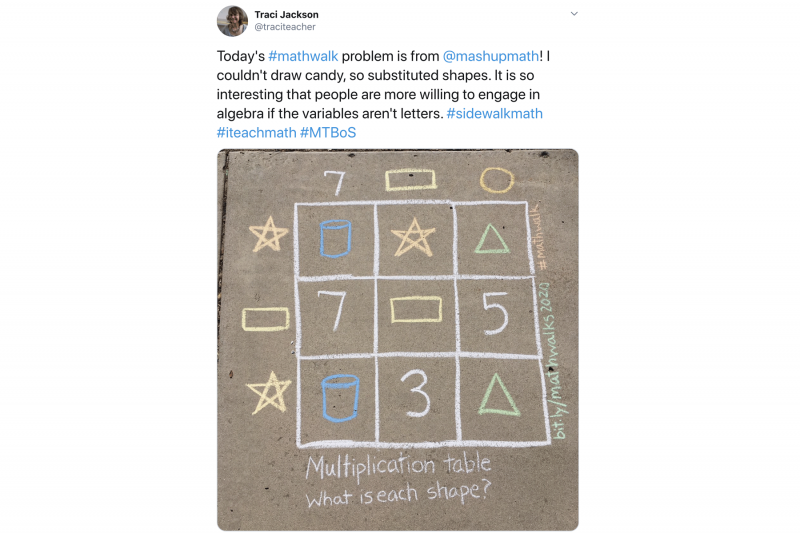At first, the provenance of the math problems was a mystery. The chalky, pastel words, numbers and symbols appeared on sidewalks near a small park in San Diego not long after the COVID-19 shutdown began. Families taking walks paused to ponder the patterns. They discussed possible solutions. They took photos to share with others. Within a few days, teacher Traci Jackson, who lives a few blocks away, started receiving messages from friends and neighbors. “Is that you leaving math everywhere?” they asked. Jackson’s secret was out, but her public math mission wasn’t over.
Changing the environment of math changes how people respond to it, said Jackson. She first observed this shift a few years ago when, inspired by teacher and blogger Sara Van Der Werf, she posted a math problem in the hallway at her school in Poway Unified School District. Jackson watched with delight as not only students but colleagues and parents lingered by the problem, their curiosity piqued. Instead of feeling pressured to get the right answer quickly, passersby were willing to think about the problem for a bit or get it wrong and revise their thinking. Now, with schools closed, Jackson is replicating that magic by decorating her neighborhood with sidewalk math problems.


